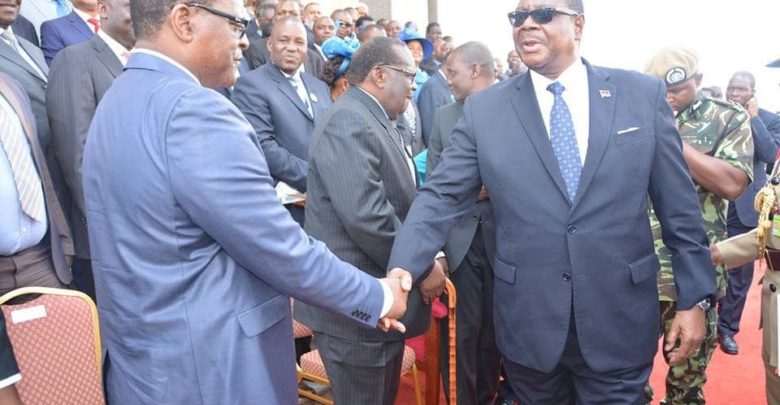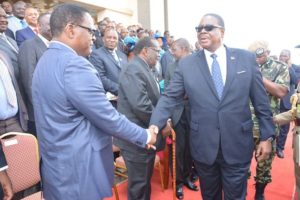Columns
Chakwera vs Mutharika: Who possesses better leadership skills for Malawi?

By Burnett Munthali
Today’s analysis is an attempt to contrast the former President and the incumbent President of Malawi.
We will now examine the first four years of Mutharika and Chakwera, specifically regarding food security.
Professor Arthur Peter Mutharika
Malawi Food Security Outlook Update Analysis
According to the FEWS NET analysis for December 2018 to May 2019, most southern and some central districts experienced Crisis (IPC Phase 3) acute food insecurity outcomes due to below-average cereal and cash crops from the 2017/18 production season.
Poor households also had below-average incomes as most income-earning opportunities were in agriculture and dependent on rainfall, which had been well below normal.
In some northern and central areas, where poor households were unable to afford many basic non-food needs, Stressed (IPC Phase 2) outcomes existed. The rest of the country was in Minimal (IPC Phase 1).
The start of the 2018/19 rainfall season was characterized by below-average and erratic rainfall, especially in central and southern areas.
This resulted in limited agricultural activities, reducing labor opportunities in this sector.
Forecasts predicted below-average rainfall for the remainder of the season in the southern half of the country, which would result in continued below-average agricultural labor opportunities for poor households who depended on this as an income source to meet their basic non-food and food needs during I lean season.
National maize grain prices followed normal seasonal trends, although they were above the previous year’s prices.
Prices trended slightly above the five-year average.However, some report in southern Malawi already started to report price increases of and grain as the national demand increased during the lean season.

Reverend Lazarus Chakwera
Malawi Food Security Outlook Update Analysis
According to the FEWS NET analysis released in April 2023, food security outcomes will persist through September in most southern Malawi districts due to the impacts of Tropical Cyclone Freddy, which occurred between March 11 and 13, 2023, and subsequent above-average rainfall. The cyclone caused significant damage to infrastructure, loss of life, injury, and displacement of over 659,000 people.
Additionally, more than 200,000 hectares of cropland were destroyed. In contrast, households in central and northern Malawi were/are expected to experience Minimal/None (IPC Phase 1) food security outcomes during the outlook period because they are likely to access adequate food and income from their own-produced agricultural commodities.
The 2022/23 production season in Malawi is below average, particularly for the maize crop, which contributes over 70 percent of the national food requirements.
In conjunction with reduced access to fertilizers, the impacts of Tropical Cyclone Freddy have significantly reduced crop harvests, especially in southern Malawi, the worst cyclone-affected area.
FEWS NET predicted that maize production at the national level will be about 20 to 30 percent below average, which is likely to exacerbate food insecurity in the affected areas.
Malawi’s economic growth has continued to be slow, affecting both the macro- and micro-economy.
Inflation has remained high, with the annual inflation rate standing at 28.8 percent in April 2023, up from 15.7 percent in April 2022.
Despite the start of the tobacco marketing season, Malawi is still facing a foreign currency deficit, which is only enough to cover one month of imports, compared to the minimum threshold of three months.
The worsening economic situation has led to rising costs of goods and food commodities, compounded by low fuel imports, resulting in high fuel prices and periodic nationwide shortages.
The fuel shortages have driven up transportation costs and production costs, putting upward pressure on the prices of food and other goods, likely restricting access to food and income for poor and very poor households.
Throughout the outlook period, food prices have continued to trend higher than the previous year (2022) and the five-year average.
Given below-average carryover stocks from the previous season and anticipated reduced production this season, supplies in markets are below average.
Early reliance on market purchases by households that produced nothing or had all their crops washed away by flooding has increased demand, thereby putting upward pressure on prices.
FEWS NET price projections indicate that maize prices will range from 500 MWK to 1,100 MWK per kilogram from May to September 2023, which is more than double or three times higher than prices at the same time last year and the five-year average.
These high prices will significantly impact household food access and consumption, particularly for poor and very poor households.
Conclusion
In 2018, national maize grain prices followed normal seasonal trends, although they were above the previous year’s prices. Prices trended slightly above the five-year average.
From May to September 2023, FEWS NET price projections indicate that maize prices will range from 500 MWK to 1,100 MWK per kilogram, which is more than double or three times higher than prices at the same time last year and the five-year average.
However, the price of a 50kg bag of maize in some parts of Lilongwe is already costing MWK 30,000, up from MWK 5,000 in 2019.
We can clearly see that things are not stable and not getting any better.






